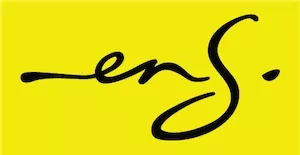It's not often that we get IP judgments from the Free State Division of the High Court, but the trade mark infringement judgment of Hendler & Hart (Pty) Ltd v BV Cookware (Pty) Ltd was recently handed down by this court on 17 October 2022, and is interesting to say the least.
The applicant
Hendler & Hart ("H&H") is a large kitchenware specialist that sells pots and pans under the trade mark Hart. The Hart trade mark appears on the black plastic handles of the pots and on the pot lids. H&H has various South African trade mark registrations for Hart in class 21 in respect of kitchenware, including pots and lids. One of H&H's Hart products is its "J7 10-piece pot/casserole set" (the "J7 range"). It was common cause between the parties that the Hart brand is enormously successful, and well-known in the industry.
The respondent
BV Cookware ("BVC"), trading as J & A Kitchenware, is a direct competitor of H&H, and it too sells pots and pans. One of BVC's offerings is its "Super NW7 10 piece pot/casserole set" (the "NW7 range"), which it sells under the trade mark Bon Voyage.
In August 2021, H&H became aware of BVC's NW7 range, which it believed used a photo of H&H's J7 range on its packaging. H&H alleged that BVC's packaging includes a photo of pots, and in this photo, the pots have handles bearing H&H's Hart trade mark. It was common cause that the Hart trade mark does not appear on the actual pots that are inside BVC's packaging.
The judgment
Judge Molitsoane said that section 34(1)(a) of the Trade Marks Act, 1993 deals with infringement in the case of any unauthorised use, in the course of trade, of a trade mark that is confusingly similar to a registered trade mark, and that is used on the same goods as those which are covered by the trade mark registration.
Trade mark law
As is the norm, the judge applied the test from the classic case of Plascon-Evans, to determine whether there is indeed an infringement. The test includes, amongst other things, the following:
- the need to establish that a substantial number of people are likely to be confused;
- considering the issue through the eyes of the notional customer;
- considering the dominant features;
- considering the sound, sense and appearance of the marks;
- bearing in mind that marks are remembered by their general impression; and
- taking account of imperfect recollection.
When did H&H become aware of the infringement?
H&H claimed that it first became aware of the allegedly infringing packaging in August 2021. BVC disputed this, saying that the packaging had been designed by a Chinese agency in 2015 and had been in the market since 2016, and that H&H must have been aware of its product for a number of years.
The judge, however, accepted the evidence of two long-serving senior employees of H&H, who testified that they had found the infringing product in 2021, having been unaware of BVC's product before then. The judge said that, given H&H's size, "it is inconceivable that the Bon Voyage products would have been in the market for about five years without the applicant being aware of its direct competitor".
BVC's defence
BVC made a number of claims about the mark that was visible in the photo on its packaging. These ranged from:
- there is no trade mark on the handles;
- alternatively, there is a trade mark but consumers won't notice it;
- alternatively, there is a trade mark but it is illegible/not legible to the naked eye; and
- alternatively, there is a legible trade mark but it is not confusingly similar to H&H's Hart trade mark;
The result
Judge Molitsoane was having none of it - "closer scrutiny of the offending packaging indicates that the mark on the pot lids resembles the Hart mark. Such marks appear at exactly the identical position in which the Hart trade mark appears on the applicant's products. The respondent fails to explain the resemblance between the Hart trade mark of the applicant and one used by the respondent on the offending packaging."
BVC was unable to show what the trade mark visible on the infringing packaging actually was.
The judge went on to say that "the pot lids contained in the packaging bear no mark at all.what the respondent fails to explain is why the embossment appears on the offending packaging and not the pots themselves. The inescapable conclusion is that the purpose of depicting the Hart mark on the packaging and not on the pot sets themselves is to mislead the consumers into thinking that they are buying pots of the applicant or associated with it."
It was, according to the judge, a clear case of trade mark infringement. The judge granted the following relief:
- an interdict (injunction);
- delivery-up of offending materials;
- an enquiry into damages or a reasonable royalty; and
- legal costs.
I'll finish with these words from the judgment, perhaps worthy of another 'H' - Catch-22 author, Joseph Heller:
"The respondent asserts that the mark is not legible to the naked eye. At the same time, it asserts that it is not a Hart trade mark. If one were able to say that it is not a Hart trade mark, then it implies that it is indeed legible and can be read, which negates the notion that it is neither legible nor that it is not a Hart trade mark."
An interesting judgment from a court that does not often hear IP cases!
Reviewed by Gaelyn Scott, Head of ENSafrica's IP department.
The content of this article is intended to provide a general guide to the subject matter. Specialist advice should be sought about your specific circumstances.


